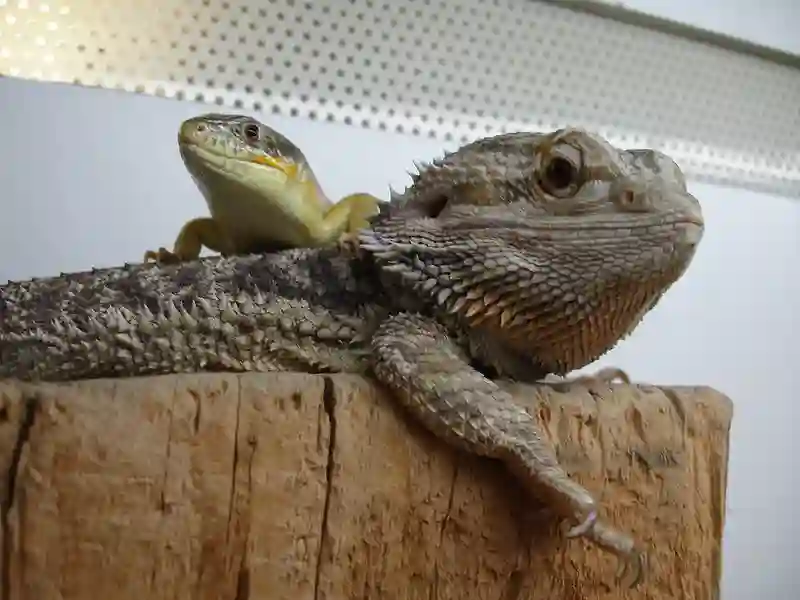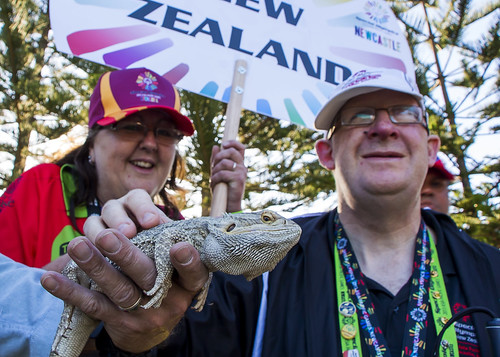The joy of owning a bearded dragon often comes with the complex responsibility of ensuring they are comfortable, even during transit. This article will equip you with a comprehensive guide on how to eliminate the stress associated with moving your bearded dragon from one location to another.
Understanding Your Bearded Dragon’s Transport Concerns
It is important to understand what makes transporting your bearded dragon a sensitive issue. The foremost concern is stress – bearded dragons are sensitive creatures that can experience severe stress during travel. This could lead to a weakened immune system, making them susceptible to illness. Therefore, careful preparation is paramount to ensure their comfort and safety.
Mastering the Art of Traveling With Your Bearded Dragon
Here is how you can adeptly handle traveling with your bearded dragon:
1. Assemble the Essentials for Your Bearded Dragon
Preparing a bearded dragon travel checklist is the first step to ensuring a successful trip. While the requirements may vary, the basic supplies generally include a portable enclosure, a heat source, blankets for insulation, water, and food for longer trips.
2. Ready the Temporary Enclosure for Your Bearded Dragon
Preparing a travel-safe enclosure for your bearded dragon is crucial. It should be ventilated, secure, and comfortable, allowing your bearded dragon to stay calm and cozy during the transit. It could be a small carrier with holes for air circulation and a blanket to offer comfort.
7 Proven Tips for a Stress-free Transport of Your Bearded Dragon
Once you’ve got the basics covered, it’s time to delve into the practical steps to ensure a seamless transit.
1. Avoid Feeding your Bearded Dragon Close to Travel Time
Food can cause discomfort during the journey, so it’s best to not feed your bearded dragon the day before or the day of travel. This reduces the chance of your pet experiencing digestive issues or discomfort during the trip.
2. Transition to a Warm Environment
Always move your bearded dragon from one warm environment to another warm environment. The abrupt exposure to cold could be detrimental. Hence, ensure your car is pre-heated before placing your pet inside.
3. Adopt a Cautious Driving Approach
The stability of your bearded dragon during the journey is key. Avoid sudden brakes and sharp turns to prevent stress and potential injuries.
4. Ensure Your Bearded Dragon’s Safety
Safety is of the utmost importance during transit. Consider using a seatbelt to secure the carrier, ensuring your bearded dragon is safe in case of sudden movements.
5. Regularly Monitor Your Bearded Dragon
Frequent checks on your bearded dragon will help assess their comfort and well-being. Look for signs of stress and adjust their environment if necessary.
6. Minimize Travel-related Stress
Do your best to keep the travel environment quiet and calm. Loud music or excessive movement could stress your bearded dragon, so try to minimize such disturbances.
7. Set Up Their Regular Habitat Quickly
Upon reaching your destination, promptly set up their regular habitat. This quick transition will help your bearded dragon adjust faster and reduce post-travel stress.
Can You Travel With Your Bearded Dragon on a Plane? A Comprehensive Guide
The first step to take when considering air travel with your bearded dragon is to check the airline’s specific pet policy.
Many airlines allow small pets in the cabin, but the terms and conditions vary. Some might allow reptiles, while others may not. It is essential to check this information before booking your flight to avoid any disappointments.
Destination’s Regulations
Traveling internationally with a bearded dragon can be more complex due to varying regulations regarding the import of exotic pets. Some countries might have stringent rules and requirements, including necessary vaccinations or quarantine upon arrival. Researching these regulations is paramount to ensuring a seamless travel experience.
Preparing for the Journey
Pack for travel by assembling a secure and comfortable carrier for your bearded dragon. The carrier should be well-ventilated, secure, and cozy. Besides, it is essential to pack necessary supplies like a heat source, as the cabin can be quite chilly. A few comfort items such as their favorite blanket could also help alleviate travel stress.
Labeling the Carrier
Labeling the carrier is an important step to ensure the airline staff handles it appropriately. The label should clearly state that it contains a live animal, the type of animal, and any specific handling instructions. In the event of any mishaps or confusion, a well-labeled carrier will ensure your bearded dragon’s safety.
Considering Alternative Options
If the airline’s policy doesn’t allow reptiles in the cabin, or if the regulations at your destination are too stringent, you might need to consider alternative travel options. These could include road travel, if feasible, or hiring a professional pet transport service that specializes in exotic pets. Additionally, you could also consider finding a trusted pet sitter to care for your bearded dragon while you are away.
Conclusion
Traveling with a bearded dragon does not have to be an arduous task. With the right planning, a well-prepared checklist, and careful monitoring, you can ensure a smooth and stress-free experience for both you and your bearded dragon. This comprehensive guide is here to equip you with the knowledge and confidence you need for your next journey with your precious reptilian friend.
Frequently Asked Questions About Traveling with Bearded Dragons
Can Bearded Dragons Get Carsick?
While bearded dragons don’t technically get carsick as humans do, they can certainly experience distress and discomfort during travel. Sudden movements and abrupt stops can stress them out, leading to health issues.
How Long Can a Bearded Dragon Safely Travel?
With proper preparation, a bearded dragon can travel safely for several hours. However, it’s crucial to monitor their condition frequently and provide adequate heat and hydration during the journey.
How Can I Keep My Bearded Dragon Warm During Travel?
Invest in a portable heat source suitable for your travel enclosure, such as heat packs or a battery-powered heat mat. Also, insulate the carrier with a blanket to help retain heat.
Should I Feed My Bearded Dragon During Travel?
It’s advisable to avoid feeding your bearded dragon the day before or on the day of travel to prevent digestion-related discomfort. For longer journeys, consult your vet for the best feeding schedule.
What Should I Do If My Bearded Dragon Seems Stressed During Travel?
If your bearded dragon shows signs of stress—such as a darkened beard, glass surfing, or irregular breathing—try to minimize disturbances and maintain an optimal temperature in the carrier. If the stress persists, consult a veterinarian immediately.
How Soon After Travel Can I Feed My Bearded Dragon?
Allow your bearded dragon to rest and acclimate to its regular habitat after travel before feeding. Typically, waiting a few hours should be sufficient.
How Can I Reduce Stress for My Bearded Dragon During Travel?
Proper preparation, including a comfortable travel enclosure, controlled temperature, and a quiet environment, can significantly reduce stress. Additionally, fastening the enclosure securely and driving cautiously can help provide a smoother ride.



